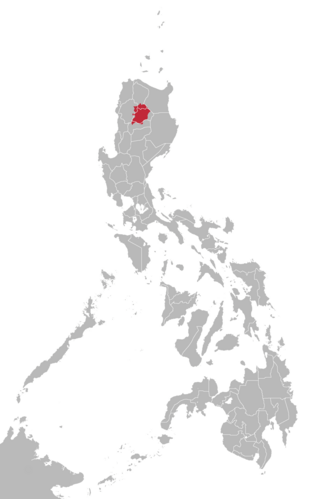Related Research Articles
Most languages of Europe belong to the Indo-European language family. Out of a total European population of 744 million as of 2018, some 94% are native speakers of an Indo-European language. Within Indo-European, the three largest phyla in Europe are Romance, Germanic, and Slavic; they have more than 200 million speakers each and together account for close to 90% of Europeans. Smaller phyla of Indo-European found in Europe include Hellenic, Baltic, Albanian, Celtic, and Armenian ; Indo-Aryan, though a large subfamily of Indo-European, has a relatively small number of speakers in Europe.
Magar Dhut is a Sino-Tibetan Language spoken mainly in Nepal, Southern Bhutan, and in Darjeeling and Sikkim, India, by the Magar people. It is divided into two groups and further dialect divisions give distinct tribal identity. In Nepal 788,530 people speak the language.

Kalinga is a dialect continuum of Kalinga Province in the Philippines, spoken by the Kalinga people, alongside Ilocano. The Banao Itneg variety is not one of the neighboring Itneg languages.

Sansi is a Rajputana inherited clan in India, originally located in the Rajasthan area of northwestern India, but expelled in the 13th century by Muslim invaders and now spread to states of Rajasthan as well as scattered throughout India and Sindh, Pakistan. They claim Rajput descent. There were two distinct offshoots of the tribe: the first was a vagrant community connected to the Jat tribes of Central Punjab; the second was an agricultural Jat clan found in Sahiwal, Amritsar and Gujranwala. They are often confused with other ethnic groups called Sansi, as Sansi is a widespread name in South Asia.
Sikiana, or Kashuyana is a Carib language that was spoken by 33 people in Brazil and 15 people in Suriname. It was spoken in Venezuela at one time and is now probably extinct there. The Warikyana dialect became extinct around 2000, and the language frequently goes by the name of the surviving dialect, Sikiana.

Several languages are spoken in Sri Lanka within the Indo-Aryan, Austronesian, and Dravidian families. Sri Lanka accords official status to Sinhala and Tamil, and English as a recognised language. The languages spoken on the island nation are deeply influenced by the various languages in India, Europe and Southeast Asia. Arab settlers and the colonial powers of Portugal, the Netherlands and Britain have also influenced the development of modern languages in Sri Lanka. See below for the most-spoken languages of Sri Lanka.

The Tharu or Tharuhat languages are any of the Indo-Aryan languages spoken by the Tharu people of the Terai region in Nepal, and neighboring regions of Uttarakhand, Uttar Pradesh and Bihar in India.
The Birhor language is a highly endangered Munda language spoken by the Birhor people in Chhattisgarh, Odisha, West Bengal, and Maharashtra states in India.
Central Tibetan, also known as Dbus, Ü or Ü-Tsang, is the most widely spoken Tibetic language and the basis of Standard Tibetan.
Kalabari is an Ijo language of Nigeria spoken in Rivers State and Bayelsa State by the Awome people. Its three dialects are mutually intelligible. The Kalabari dialect is one of the best-documented varieties of Ijo, and as such is frequently used as the prime example of Ijo in linguistic literature.
The Bumthang language ; also called "Bhumtam", "Bumtang(kha)", "Bumtanp", "Bumthapkha", and "Kebumtamp") is an East Bodish language spoken by about 20,000 people in Bumthang and surrounding districts of Bhutan. Van Driem (1993) describes Bumthang as the dominant language of central Bhutan.
Khiamniungan is a Sino-Tibetan language spoken by the Khiamniungan people in east-central Noklak District of Nagaland in northeastern India and in northwestern Burma. Most of the Khiamniungans in India are known to Pathso-Nyu which remains the main language within their geographical region.
Turi is an endangered Munda language of India that is closely related to Mundari. It is spoken by only half a percent of ethnic Turi, the rest having shifted to Sadri in Jharkhand, Mundari in West Bengal, and Odia in Odisha. The Turi are classified as a Scheduled Caste in Jharkhand.
Morokodo is a dialect continuum of Central Sudanic languages spoken in South Sudan.
Bawm or Bawm Chin, also known as Banjogi, is a Kuki-Chin language primarily spoken in Bangladesh. It is also spoken in adjacent regions of Northeast India and Burma. The Bawms that live on the Chittagong Hill Tracts of Bangladesh call their settlements "Bawmram", which literally means an area or location inhabited by Bawms.
Zangskari is an endangered Tibetic language. It is mostly spoken in Zanskar in Union Territory of Ladakh, India, and also by Buddhists in the upper reaches of Lahaul, Himachal Pradesh, and Paddar, Jammu and Kashmir. It is written using the Tibetan script.
Silacayoapan is one of the more extensive Mixtec languages. It is spoken by 150,000 people in Puebla and across the border in Guerrero, as well as by emigrants to the United States.
Kurichiya is an unclassified Southern Dravidian language spoken by the Kurichiya, a Scheduled tribe of India. The two dialects, Kunnam and Wayanad, are no closer to each other than they are to Malayalam. The Kurichiya language has 27 identified phonemes, of which 5 are vowels and 22 are consonants. Frequent consonants include /p, t, c, k/ and /m, n/, while /b, v/ occur less frequently.
Vishavan is an unclassified Dravidian language spoken by a tribal people of central Kerala in India.
References
- Gusain, Lakhan (December 2002). "Endangered Language: A Case Study of Sansiboli". Language in India. Retrieved 29 December 2006.
- 1 2 Sansi at Ethnologue (18th ed., 2015) (subscription required)
Kabutra at Ethnologue (18th ed., 2015) (subscription required) - ↑ Language in India: Endangered Language: A Case Study of Sansiboli